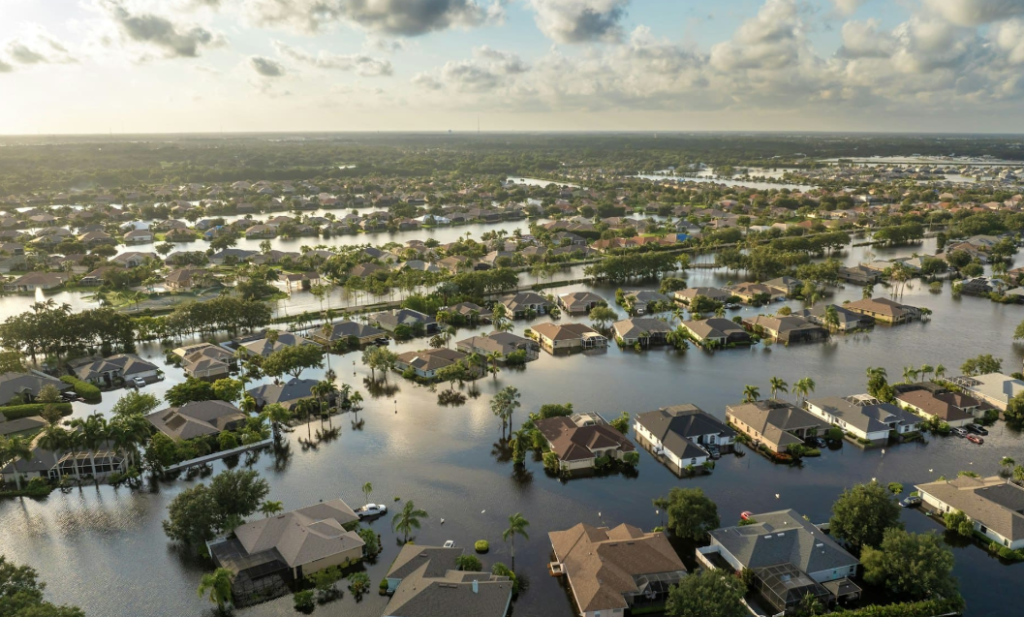Florida is one of the most vulnerable regions in the United States when it comes to climate change. Its low elevation, extensive coastline, fragile wetlands, and dependence on tourism and agriculture make it highly susceptible to the consequences of rising temperatures, extreme weather, and sea level rise. Scientists have already observed significant environmental shifts, and if current trends continue, Florida’s ecosystem could face severe and irreversible damage.
This research examines the ongoing and projected effects of climate change on Florida’s wildlife, coastal regions, and weather patterns, providing an understanding of the environmental challenges the state faces. I’ll mainly be using the models and trajectories of the Florida Climate Outlook, which looks at the impacts of climate change not in 100 years time, but rather in just 20 (Raimi, Keyes and Kingdon, 2024).
Rising Temperatures and Heat Extremes
Florida has warmed by about 2°F over the past century, and future projections indicate that temperatures will continue to rise, with some models suggesting an increase of 5–10°F by the end of the century if greenhouse gas emissions remain high. This warming trend has several consequences:
- More frequent and intense heatwaves, making outdoor activities dangerous and increasing the risk of heat-related illnesses.
- Longer drought periods, which lead to water shortages and increase the risk of wildfires.
- Disruption of native species, as many plants and animals rely on specific temperature ranges for survival. Coral reefs, for example, are highly sensitive to temperature changes and have already experienced widespread bleaching due to warming waters.
Sea Level Rise and Coastal Flooding
Florida is particularly at risk from rising sea levels because much of the state sits at or just above sea level. The average global sea level has risen by about 8 inches since 1900, but Florida is experiencing an even higher rate of rise due to its geography. By 2100, sea levels in Florida could rise between 1 and 6 feet, depending on future emissions and ice sheet melting rates.

The consequences:
- Coastal cities like Miami, Tampa, and Jacksonville face increased flooding, leading to property damage, economic losses, and displacement of communities.
- Saltwater intrusion into freshwater supplies, affecting drinking water and agriculture.
- Loss of coastal ecosystems: beaches, mangroves, and marshlands are swallowed by the ocean, reducing habitat for wildlife and increasing the risk of storm surge damage.
Hurricane Intensification and Extreme Weather
Florida is no stranger to hurricanes, but climate change is making storms stronger and more destructive. Warmer ocean temperatures provide more energy for hurricanes, leading to:
- More frequent Category 4 and 5 hurricanes, with increased wind speeds and rainfall.
- Slower-moving storms, which cause prolonged flooding and destruction.
- Higher storm surges, due to both rising sea levels and stronger winds pushing more water inland.
Hurricane Ian (2022) and Hurricane Michael (2018) demonstrated the devastating impacts of major storms, causing billions of dollars in damages and displacing thousands of people. As climate change continues, Florida’s hurricane season will likely become even more intense and unpredictable.

Loss of Biodiversity and Habitat Destruction
Florida’s diverse ecosystems are under severe threat due to climate change:
- Coral reefs, particularly in the Florida Keys, are dying off due to ocean acidification and coral bleaching, which occur when water temperatures rise beyond sustainable levels. The loss of coral reefs threatens marine biodiversity and local economies that rely on tourism and fishing.
- Invasive species are thriving, as warmer temperatures and ecological imbalances allow species like Burmese pythons and lionfish to expand their range, further disrupting native wildlife.
Mitigation and Adaptation Efforts
Despite these challenges, efforts are being made to mitigate and adapt to climate change in Florida:
- Miami and other cities are investing in infrastructure improvements, such as seawalls, improved drainage systems, and raising buildings to withstand flooding.
- The state is increasing investments in renewable energy, though Florida still lags behind in solar energy adoption compared to its potential.
- Wetland restoration projects are ongoing, aiming to protect and expand the Everglades to improve water management and resilience against climate change.
However, these efforts may not be enough unless global emissions are significantly reduced. Without aggressive action, Florida will continue to face some of the most severe consequences of climate change in the United States.
Having looked at all of this, climate change is already reshaping Florida’s environment, and its effects will only grow more severe in the coming decades. Rising temperatures, sea level rise, more intense hurricanes, and biodiversity loss are major threats to both the ecosystem and human populations. While efforts are being made to adapt, long-term survival in Florida will depend on both local and global efforts to reduce emissions, protect natural resources, and build climate-resilient communities.
Leave a Reply